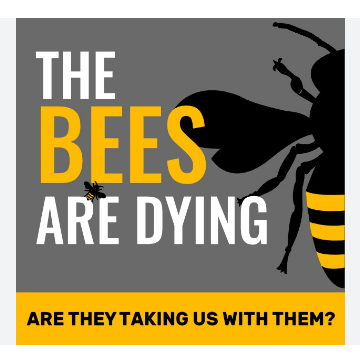“I have given two of the Glastonbury Festival Environmental Lectures. One of them has 8,000 research articles on animals and a twenty-page laboratory study citing the suppression of the immune system from ordinary low-level microwaves on cows, cats, dogs, hamsters, whales, birds, bees, bats, butterflies. Over 8,000 studies there.
The second one I gave, the first one was predominantly bees, the second one was animals from all species. I quoted fourteen, properly independent peer-reviewed university studies, saying the same. And this isn’t a UK problem, as a lovely gentleman here, sent me a picture of his hives every year. He is a priest living up in the mountains—the Rockies in the Colorado mountains. And he sends me a little letter every January with all of his hives, and to show that this isn’t just an English or UK problem, the beekeepers are fighting a battle. And every year he tells me what he’s doing there, putting special protective coating on them, doing this or doing that, moving them—and he sends me a note saying what he’s doing to try to protect his bees along with all of the other United States beekeepers.
I want to come finally on animals to a study here. This is probably the biggest and most comprehensive and legal study. This is a fifteen-year study – hundreds of papers. Mount Nardi and Mount Matheson World Heritage Sites in Australia. The study, a legal study, was for the United Nations Educational, Scientific, and Cultural Organization (UNESCO), the International Union for the Conservation of Nature. And the conclusion over Mount Nardi, Mount Matheson: they only had a hundred and five transmitters, which isn’t that many over fifteen years, and I’ve never seen anything described like this before. They said:
“Over the last fifteen years, this affects not only the top of the life chain species, but they are devastating the fabric of the community of the world heritage, causing genetic deterioration in an insidious, massive, and ever escalating scale. To truly understand what these studies reveal, is to stare into the abyss.”
And I’ve never seen the word ‘abyss’ in a scientific paper, and I thought, ‘I just look it up in my Oxford dictionary to get the proper meaning’ because this is coming here, with our nature, with our nature. And under my Oxford dictionary, under ‘abyss,’ it is an ‘abyss of despair, a catastrophe, primal chaos, hell, and a bottomless chasm.’ You can choose any of those but it doesn’t look good.
Now, I’ve summarized the whole of the document. I’ve summarized the document down here but these are groups of species. These are not species. Some of these are 66 and 86 species and when you run down this whole list of species, the common words appear. They either migrate and they won’t come back. They exhibit unnatural behaviour. And then you have ‘gone, gone, gone, gone,’ retreated to another area, rarely heard, ‘gone, gone,’ moved to the valleys and we’re going right down with birds, butterflies, wasps, and termites, bees, frogs – you name it, they are all there. Those who haven’t gone, is that the ants have become aggressive, but the most, butterflies, ants, bees, flies, are down around 80%. And some of the other creatures here, like the grey thrush, they list as rare, and there are several rares. But the problem is not whether they’re rare, but whether you have enough species left to regenerate. And this is before the 5G satellites start coming overhead and beaming down on them.”
The lecture can be watched and listened to here.

